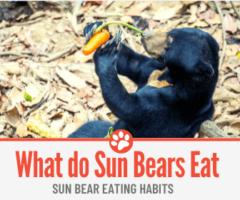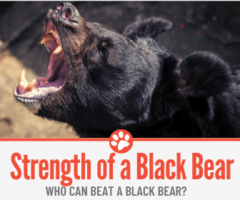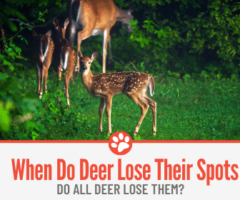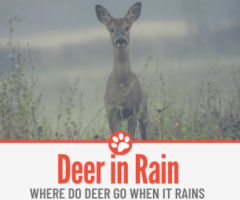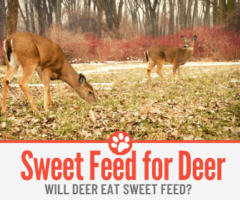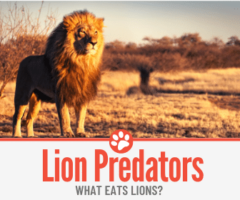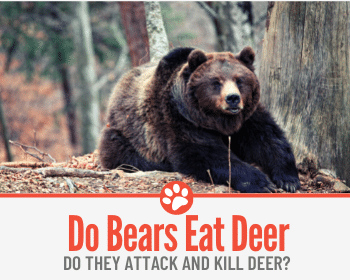 Bears and deer live together in many areas of the world, and so I considered whether bears and deer can coexist or whether one is, in fact, prey for the other.
Bears and deer live together in many areas of the world, and so I considered whether bears and deer can coexist or whether one is, in fact, prey for the other.
In this guide you will learn if bears actually are known to kill deer, how often do bears attack dears and are deers one of their main food sources.
Do Bears Eat Deer?
Yes, sometimes bears eat deer, although they’re unlikely to actively hunt and kill a fully-grown deer, they may actively hunt fawns (baby deer). Black bears, Asiatic bears and Brown bears will kill and eat baby deer. Giant pandas may nibble on a bit of venison (deer meat), but they are more likely to eat bamboo, rather than meat. Sloth bears and Sun bears mostly eat bees, termites, other invertebrates and various fruits and vegetables rather than larger mammals.
Let’s see what Bears can eat deer and how they would be able to do it in this article
Do bears actually kill deer
Bears do kill deer but not as frequently as people may think. Bears’ hunting behaviours tend to be more scavenger-like, rather than active and so they will often feed on roadkill or sleeping deer rather than actively hunting.
The amount that bears hunt does vary dependent on the type of bear; the Grizzly bear will, for example, will hunt more regularly than Black bears.
- Do Black Bears eat deer?
Black bears do eat deer, but they are unlikely to attack fully grown deer, they are more likely to attack sleeping fawns. Black bears are opportunistic hunters, and they are omnivorous, and so they eat both plant matter and meat.
Bears are therefore only likely to eat a fawn only if they stumble across one rather than actively seeking one out.
- Do Grizzly Bears eat deer?
Grizzly bears inhabit the north western part of North America, they prefer grassy areas and coastlines. Grizzly bears are omnivorous like their Black bear cousins, and therefore they eat a diet that is made up of both vegetation and meat. Grizzly bears do tend to eat a lot more meat than their Black bear cousins, however. Grizzly bears, unlike Black bears, actively hunt animals including elk, deer, moose, bison, salmon and fish. Grizzly bears will hunt full-grown animals rather than preying on sleeping fawns.
- Do Brown Bears eat deer?
Brown bears are also omnivorous, although their diet mainly consists of plants. Their diet is generally dictated by what is available to eat. The foods that are available to eat are determined by where the bears live and the particular season. Brown bears will eat rodents, squirrels, foxes and many other small animals and they have been known to attack young deer and sheep. Their hunting habits are more similar to the Black bears rather than the Grizzly bears.
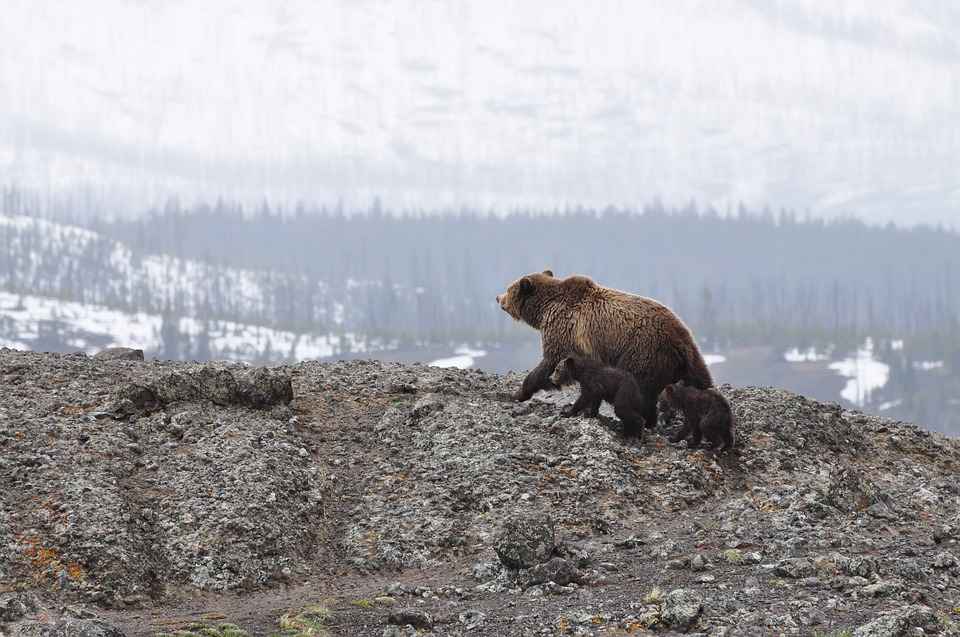
What meat do bears usually eat?
The type of meat that bears eat is largely dependent upon the time of year and where bears reside. Bears that live in colder climates will generally hibernate during the winter, as the food sources are depleted.
Therefore, the autumn season is a critical time for these bears as they enter hyperphagia.
The state of hyperphagia is when bears have an abnormally great desire for food and excessive eating.
Bears eat more in order to pack on as much fat as possible to allow them to survive the hibernation season. During the autumn, berries tend to succumb to the first heavy frost and therefore food sources for bears being to dwindle and thus bears start to look for other food sources such as other animals.
Bears that live in coastal areas will generally hunt fish, notably salmon and trout. Bears that live further inland are more likely to hunt mammals such as deer and livestock including sheep.
Bears that live near urban areas are very likely to use humans as their source of food by going through their rubbish or foodstuffs such as eating bird seed from bird feeders.
Polar bears are slightly different from other bears in that they are carnivorous. They, therefore, have a diet that consists almost entirely of meat. Polar bears enjoy eating seal meat, particularly as they are an excellent source of fat for Polar bears.
Polar bears actively hunt these animals, but this is becoming increasingly difficult as their habitats are becoming decimated by global warming. Polar bears are, therefore, unfortunately, turning to other food sources, including humans.
Do bears eat white-tailed deer & fawns?
White-tailed deer generally resides in North America and northern parts of South America. They are therefore usually prey for Black and Brown bears rather than other types of bears. It is very rare for Black bears to attack fully-grown white-tailed deer.
Black bears are, however, known to be important predators of fawns, this was identified in a study undertaken by the University of Georgia.
Fawns are generally preyed upon when they are sleeping. The adult deer will leave fawns hidden amongst bushes and trees, when they are out foraging for food, this is the point when Black bears strike and attack fawns. They are generally opportunistic hunters, and therefore they do not actively seek the prey but instead attack when the prey is defenceless.
How do bears attack deer?
Bears will generally attack deer from behind and carcasses that have been studied show evidence of claw marks and mauling on the hind end of the deer. The bear will often kill the prey through breaking its spine or its neck.
Bears usually bite prey on the back of the neck in order to break the neck. Bears begin to eat their prey from the chest or hip regions, and the entrails are amongst the first parts to be eaten; this is likely because this part of the animal is the most nutritious part of the animal.
Bears preserve their prey in a very special way, and they usually will cover the carcass in several cubic metres of moss and other foliage. Bears have been known to store their prey by burying it in the snow or even to leave it in running water. They do this so that they can keep returning to the prey and snacking on the carcass.
Related questions
Do Black Bears eat meat or Mainly Fish?
Black bears are very opportunistic hunters, most of the diets consist of grasses, roots, berries and insects, but they do also eat meat. Their diet tends to be made up of fish rather than meat, as fishes are easier to hunt and are more readily available.
If meat is available, however, then they will eat it, the type very much depends on where the Black bears reside.
Black bears tend to reside across North America, and their habitat ranges from Canada to Alaska and even as far south as Northern Mexico, the other food sources available therefore generally includes deer and carrion birds.
What is the Black bears’ favourite food?
Black bears’ lives revolve around food, particularly if they live in a colder climate as they need to be able to make sure that they have enough reserves to hibernate for the winter.
Black bears do enjoy berries, consuming up to 30,000 in a given year but their hunting style is more opportunistic, and so they don’t have too many opportunities to be fussy about the types of foods that they will eat.
Bears also enjoy eating small mammals and insects; these are crucial to their diet as they provide essential sources of protein.
As most of a Black bears’ diet is made up of fruits, in particular berries, the availability of these fruits has the most significant effect on survival of cubs and on the proportion of female bears that reproduce successfully.
In years in which berry crops fail, it is unlikely that many healthy cubs will be produced in the following year.
Berry crops are likely to fail due to the destruction of the natural habitat due to human-induced activities such as farming, deforestation, and climate change.
What can be done to ensure that bears’ habitats are preserved?
Bears’ habitats are being threatened by their large expansive habitats being disrupted by human interventions such as railways, roads and deforestation. Bears in other parts of the world, for example, Polar bears, are threatened by factors such as global warming and melting ice caps.
By supporting environmental protection efforts in areas where bears are or once were prominent, you can help to ensure the continued existence of these magnificent creatures.

